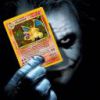 21
21After first contact charge on S2 =Q/2
After SECOND contact charge on S2 =(Q+Q/2)/2=3Q/4
After THIRD contact charge on S2 =(Q+3Q/4)/2=7Q/8
.................
After nTH contact charge on S2 = (2n-1) Q2n
So the electrostatic energy of S2 after 'n' such contacts with S1
electrstatic energy = (2n-1) Q4πεr 2n
 1
1sibal bhaiiya i think the thing u ve done is wrong .....coz this ll be in the case of two identical spheres which u have done ............but here the two spherical body r not identical.......
 1
1a request to manmay and other users
please specify if the problem is ur doubt or u have posted for others for practice
[1]
 39
39Sudharshan..I don't think you noticed the section. It's "Question of the Day" forum. We don't post doubts here.
 39
39As manmay explained this question to me, for every time the two spheres are brought in contact, their potentials equalize. So we have to use that fact to get the answer. The spheres are not identical.
We know that V = kQRadius
Now on the first touch,
k(Q - q1)R = kq1r
On the second touch,
k(Q - q2)R = k(q1 + q2)r
And so on till the nth touch where
k(Q - qn)R = k(q1 + q2 + q3 + .......+ qn)r
We need a relation between qn and Q.
Note from the first equation that
q1 = QRR + r
Let RR + r be "a".
q2 = Qa² and so on.
Therefore qn = Qan
So our last equation becomes :
Q - QanR = (Sum of GP)r
The sum of GP is given by :
Sum = Q(1 - an)1 - a
Ok got it :
Un = (Total charge)²2C
Total charge acquired after n touches = Q0 = q1 + q2 + q3...
Un = (q1 + q2 + q3 + ..... + qn)²2C
= Q²(a + a² + .... + an)²2C
= Q²a²(1 - an)²2C(1 - a)²
For the second part of the question, if n → ∞, the GP becomes an infinite one.
So the sum of the GP becomes a1 - a
Hence Un = Q²a²2C(1 - a)²